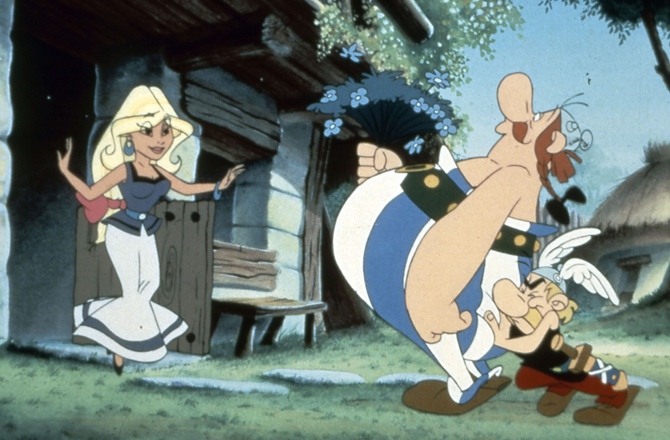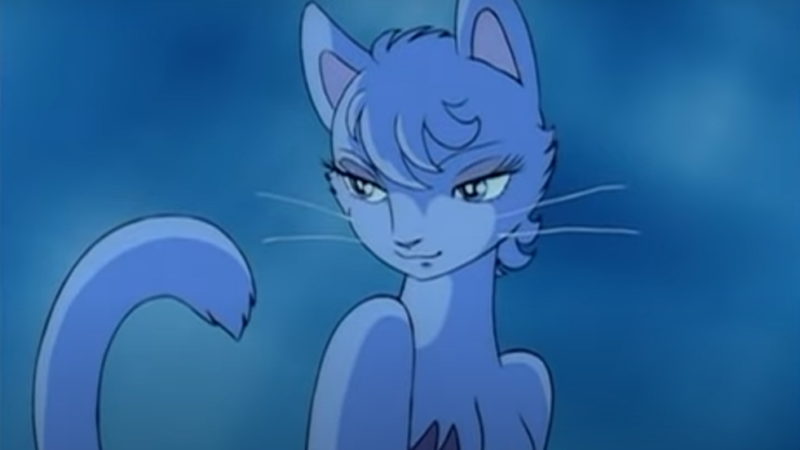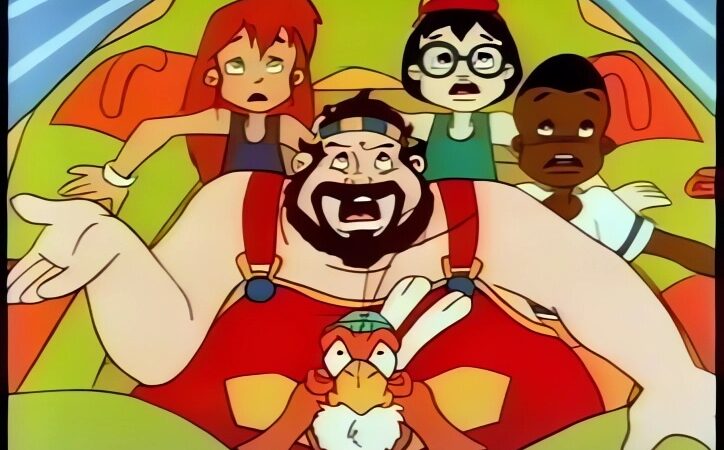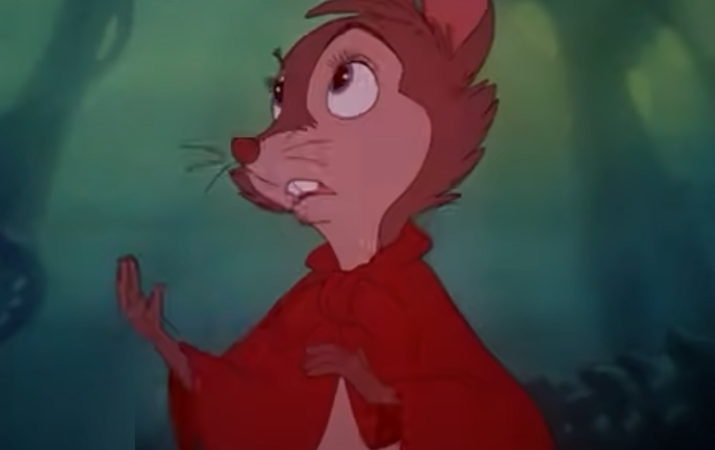We are made like this, Exploring the human body (Once upon a time) the animated series
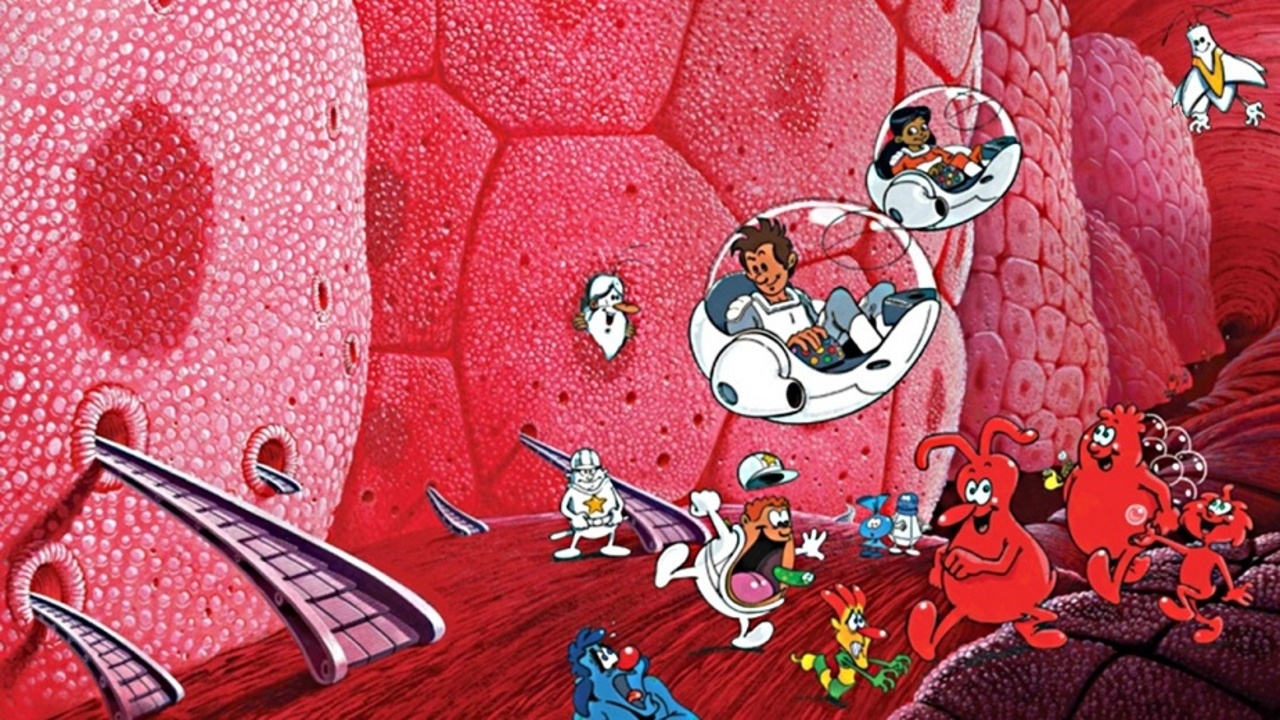
That's how we are done (Mediaset title) or even Exploring the human body (titled DeAgostini), or Once upon a time there was a life: the fabulous story of the human body (first version translated into Italian appeared in Canton Ticino in 1987), whose original title is: Once upon a time the life is a French animated series for children that tells the story of the human body. The program was originally produced in France in 1987 by Procidis and directed by Albert Barillé. The series consists of 26 episodes and originally aired on the French channel Canal +, and then on the state channel FR3. It is the third part of the Once upon a time series ...
Once upon a time ... Life has revived the edutainment formula that had been largely neglected in Once upon a time ... there was Space. The series combined entertaining storylines with factual information, presented metaphorically.
The series That's how we are done (Once upon a time ... life) it used the same recurring main characters from the other series Once upon a time… some represent the cells that make up the body's systems and defense mechanisms, such as red blood cells, white blood cells and platelets, while the antagonists represent viruses and bacteria that threaten to attack the human body. Each episode of the series featured a different organ or system within the human body (such as the brain, heart, circulatory system, etc.).
In the French language version of the series, Michel Legrand's opening theme “L'hymne à la vie” (French for “hymn to life”) was performed by Sandra Kim, the winner of the Eurovision 1986 competition.
In Italy the acronym That's how we are done it was composed for the music by Massimiliano Pani, for the text by Alessandra Valeri Manera and is sung by Cristina D'Avena.
The series aired in the Arab states of the Persian Gulf, Australia, Belgium, Canada, Croatia, Czechoslovakia, Finland, France, Gabon, Germany, Greece, Haiti, Hungary, Iceland, Ireland, Israel, Italy, Japan, Kenya, Mexico , Netherlands, Norway, Poland, Portugal, Soviet Union, Senegal, Singapore, Slovakia, South Africa, Spain, Sweden, Switzerland, Syria, Taiwan, Thailand, Turkey, United Kingdom, Yugoslavia and Zimbabwe.
Characters
The series makes use of the recurring human characters from the Once Upon a Man Series. Each character in the series appeared as a real person (the smart old doctor, the devoted blonde mother, the boy and girl, their sturdy friend and the pair of bullies) and anthropomorphic representations of cells and cellular functions within the body. human.

The manager of the brain - represented by the Master, the old bearded man.
The manager of the cell nucleus - represented by the Master, usually asleep in his chair.
enzymes - The workers of the human body, usually shown as a man in dungarees and a baseball cap.
Digestive enzymes - Digestion work. Some enzymes are shown as female and most as male. Females are seen only in the stomach. Males appear in the stomach and small intestine.
Hormones - body messengers, represented as humanoid robotic outboard motors spray painted according to function; those representing thyroxine are enlivened by iodine. These hormones are all female.
Red blood cells - represented by red humanoids: the elderly Professor Globus, who tells a lot about how the body works; emo; and his curious and spiteful friend Globin. They carry oxygen bubbles or carbon dioxide bubbles in a back pocket, turning dark red when carrying carbon dioxide.



Neurotransmitters: the blue fast guys who can deliver messages like documents or passengers through nerves and stations. They are mostly running anytime on delivery and pick up or drop off passenger times until the end is reached.
Platelets - represented as red discs with a face, legs and arms.



White blood cells - The police force of the body.
Neutrophil granulocytes - represented by foot patrol "policemen" who are completely white in color and wear a yellow star. They carry batons and swallow any parasites they find. They can clone themselves. Most of the time they work as traffic cops. Their commander is the same but with a Caucasian head and is called Jumbo or Jumbo Junior.
Lymphocytes - represented by:
B lymphocytes as marshals in a small round single-seat aircraft with two side-mounted steerable water-jet thrusters; two of them are a version of Peter and Psi (called Captain Peter and Lieutenant Claire). A few other (unnamed) B-cell pilot characters each appear more than once, for example, a teenager with a mottled face. They can release antibodies from a bomb bay under the belly. They can divide; this duplicates boat and pilot. Their uniforms are very light blue with shoulder pads. (Those uniforms appear in the outside world in some futuristic scenes as astronaut uniforms / undersuits.)
T lymphocytes: the same type of boat but with a large capital T on the belly in the bow. They can release the smoke that kills bacteria.
Phagocyte: spherical nacelle hovering with several large suction tubes coming out of it. A pilot's head can be seen through a small canopy on top. They can emit smoke that kills bacteria.
Basophils: stout women carrying a basket of "histamine grenades" and throwing them to attack bacteria.
Macrophages (like large yellow land vehicles in the shape of frog heads with a large front shovel bucket and three wheels; each "eye" is a small canopy that reveals a pilot's head), "body cleaning services". Most of the time they work by removing the body's waste and during times of emergency they eat bacteria and viruses.
Immature leukocytes: adolescent humanoids with the same uniform as B-cell pilots: seen in the bone marrow, which is represented as a police training college.
The antibodies - like small white insect characters that, after being thrown against infectious agents, fly around the bacteria or viruses and paralyze them. Their commander is called Metro.
The Pathogens are the main antagonists of the series. It's the characters that make people sick. The other antagonists are immature leukocytes in the bone marrow,
The Campylobacter bacteria (represented as blue bullies) - the great bully. Mostly blue in color.
Viruses (represented as yellow worms with their hands) - the smallest bully. Mainly yellow in color.



Organic molecules, who are represented in two cases as characters.
Fats / Fatty Acids: Represented as fat yellow ponies.
Protein : Represented as a tall, strong and muscular orange character in overalls with some dog-like characteristics.
Sugars: small green and purple hexagons and pentagons. Sometimes they appear as candy-like characters.
Amino Acids: appearance similar to antibodies, generally invisible until the episode relating to protein synthesis.
DNA / RNA : Represented fairly accurately and in detail when explaining protein synthesis.
Vitamins: represented as colored living letters. As seen in the lymphatic system, P is present but rarely.
Cholesterol: yellow creepers that can block a passage in a blood vessel, as seen in the liver factory, when the cholesterol got close to the leukocytes, which caused this blockage and this also stopped the erythrocytes.
Rooster / bile: blue-green liquid that shrinks fats, as seen in Digestion.
The series describes a "society within the body" with a strong pyramidal layering of work.
Human
- Pierrot, child (and boy in some episodes) protagonist of the series. He is a very obedient child and always follows the advice of his parents and doctors.
- Pt (in the French original Psi and in the little volumes Kira), child (and girl in some episodes, Pierrot's girlfriend). She too is very diligent, that she follows the advice of her parents and the Master.
- Grosso, child. Pierrot's best friend. With a stout build, he helps Pierrot in many situations, sometimes hurting himself.
- Pierrette, generally the smallest of the group, with blond hair, Pierrot's sister and Grosso's girlfriend.
- Mom . She is the mother of Pierrot and Pierrette. She is responsible and very caring. She always makes sure her children wash their hands regularly before eating, and their teeth after a meal. She always tries to answer the curious questions of her children regarding the human body and when they are not well she does not hesitate to take them to the wise Master, the family's trusted doctor.
- Nonno. He is the grandfather of Pierrot and Pierrette. Given his age, he can no longer play ball with them, but he is very wise and explains the cycle of life to the young Pierrot. He dies in one of the last episodes.
- Teacher. He is the reference figure regarding the knowledge of the human body, playing the role of doctor, dentist or researcher. He is very wise, but he knows how to be very strict, especially with those who do not listen to his advice.
- I bad (in original Naboth e Mangy in the volumes and in the credits, sometimes also cited as Birba e Ringworm, but never mentioned directly in the cartoon): their age is indefinite, since at times they appear as the repetitives of the class, at other times as two adults driving recklessly in a car, or as two smokers and alcoholics. This duo, of which the first is very thin and the second sturdy, arranges jokes towards others, causing damage or injuries which later become the object of scientific explanation.
Italian edition
In Italy it aired on Italia 1 and in reruns on Hiro, Cartoonito and Boing. Starting from Saturday 5 November 2016, on Italia 1 the restored edition of the series was broadcast every weekend (at the beginning with two consecutive episodes, then with only one per day) inside the morning container "Latte & Cartoons ". This new edition retains the original 1989 Italian dubbing, however the video is completely restored, passing from the 4: 3 to 16: 9 aspect ratio. The theme song kept the same song by Cristina D'Avena, in the same duration of about a minute and a half, but renewed the montage of the images and the writing of the title. The episodes of the new Italian edition follow the original order of the French one (except the second episode, initially broadcast as the last due to small sexual elements) and also the translation of the titles is more faithful to the original. This broadcast was suspended close to the Christmas holidays, and then resumed immediately afterwards. Furthermore, from 9 January 2017, on the occasion of the thirty years since the debut of the series, this same version has been revived by the Cartoonito broadcaster in prime time.
Furthermore, this version in HD and restored is available on Mediaset Infinity, Netflix, Prime Video, TIMvision, VVVVID.
Technical data
Original title Once upon a time the life
Language original French
Country France
Author Albert Barillé
Music Michel Legrand
Studio Procidis
Network France 3
1st TV September 13, 1987 - March 13, 1988
Episodes 26 (complete)
Relationship 4:3
Episode duration 24 min
Italian publisher De Agostini (VHS and DVD), Dynit (DVD)
Italian network Italia 1
1st Italian TV 26 February 1989
Italian dialogues Alessandra Taddei
Italian dubbing studio VENUE, Merak Film
Italian dubbing director Gianni Mantesi
Gender science, comedy, adventure
Preceded by At the edge of the universe
Followed by Let's rediscover the Americas

